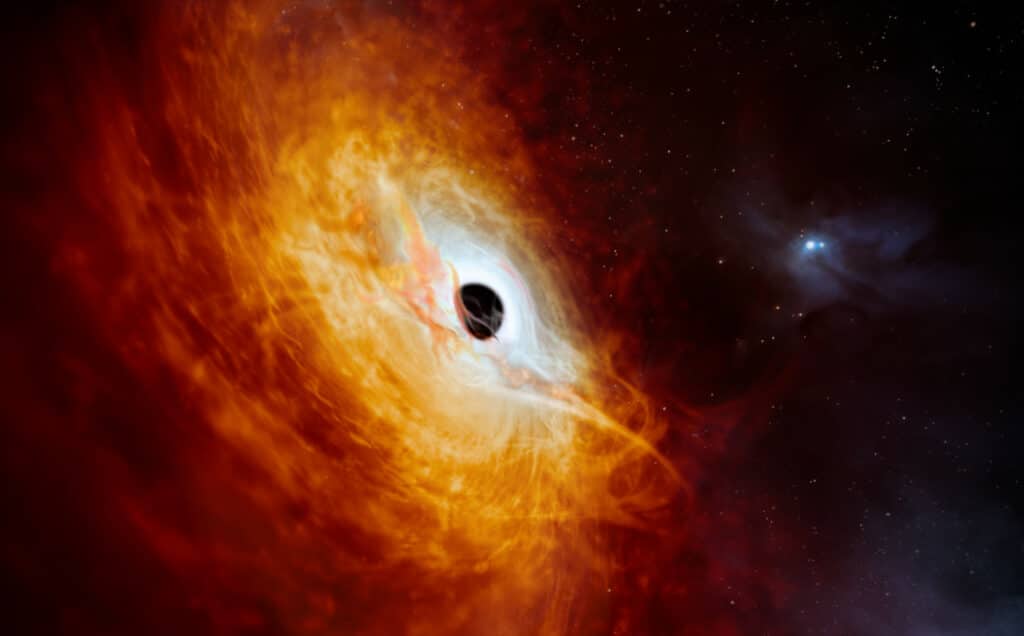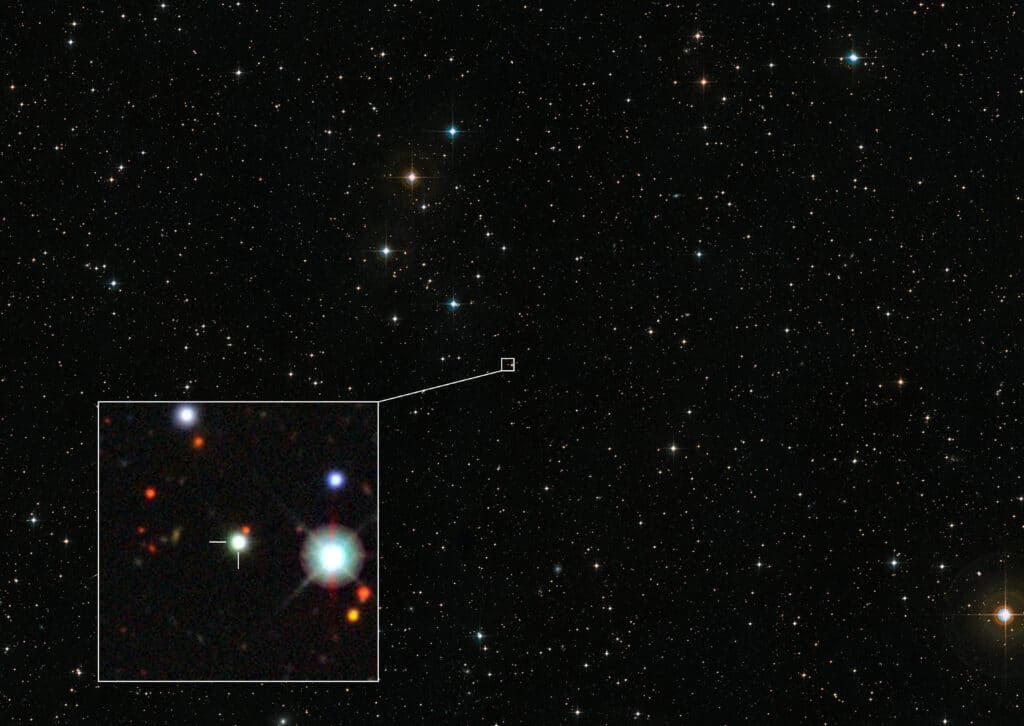A new record-breaking quasar sheds light on the growth of supermassive black holes
A team of astronomers from Australian National University has discovered the most luminous and likely fastest-growing supermassive black hole known to date. This behemoth black hole, clocking in at a whopping 17 billion times the mass of our Sun, is powering the most brilliant quasar ever dubbed SMSS J052915.80-435152.0 (or J0529-4351 for short).
Quasars are intensely bright cores of galaxies powered by ravenous supermassive black holes feeding on surrounding gas and dust. As material spirals inward, it heats up and releases copious energy before crossing the black hole’s event horizon, the point of no return.
“Finding rare and exceptionally bright quasars like J0529-4351 does not require large telescopes, but is instead a needle-in-the-haystack problem that needs precise data with discriminative power across large areas of sky,” writes lead author Christian Wolf, from the Australian National University in the paper. “Such objects are often hiding in plain sight and are mistaken for stars.”
Indeed, J0529-4351 shone at an apparent magnitude of 16 but was overlooked until recently, buried in surveys of millions of celestial objects. Gaia satellite data proves it to be a single point-like source rather than a gravitationally lensed double image, which can brighten some quasars. Extensive monitoring also shows the quasar was not flaring up temporarily but maintains a consistently high brightness.

Bolometric luminosity – the total power radiated across all wavelengths – for J0529-4351 is a staggering 100 trillion (10^14) times the Sun’s output. This energy emanates from a slim accretion disk only light-days across, as gas spirals into the central black hole. Modeling suggests the black hole has a moderate spin and is viewed intermediate between face-on and edge-on.
From the quasar’s luminosity, the team estimates the black hole is ballooning at a rate up to 490 Suns per year. “This makes J0529–4351 the most luminous quasar and by inference, the fastest-growing black hole in the Universe known to date,” the study explains. The beast outweighs the entire Milky Way galaxy’s central black hole by a factor of 1700.
What fuels such rapid accretion? Mergers of gas-rich galaxies likely feed ample material toward the galactic center. Upcoming Atacama Large Millimeter Array (ALMA) observations can map molecular gas flows in J0529-4351’s host galaxy for clues to the food source.

This dazzling quasar also provides a unique target to better understand supermassive black holes. Using the GRAVITY instrument on ESO’s Very Large Telescope Interferometer, researchers can resolve and directly weigh the black hole at the heart of J0529-4351.
“It is a surprise that it has remained unknown until today, when we already know about a million less impressive quasars. It has literally been staring us in the face until now,” says co-author Christopher Onken, an astronomer at ANU, in a media release.
As bright beacons across cosmic history, quasars serve as valuable signposts for charting the growth and evolution of supermassive black holes. Finding more examples like J0529-4351 will teach us about the emergence of billion-solar-mass giants lurking in the cores of massive galaxies.
The research paper is published in Nature Astronomy.











